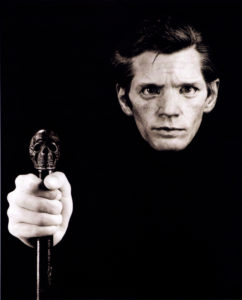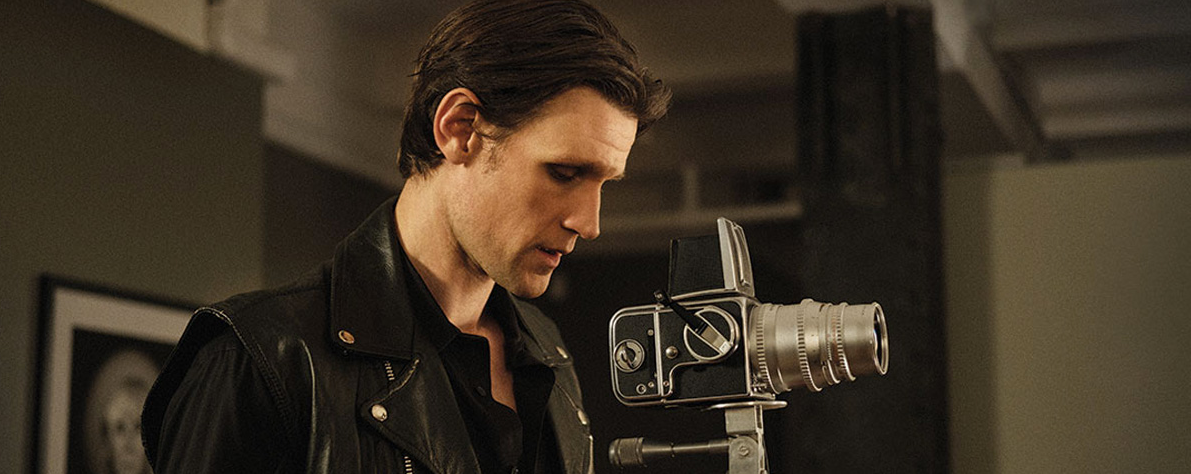IL 30 OTTOBRE È STATO PROIETTATO PRESSO IL CINEMA LUMIÈRE IL FILM MAPPLETHORPE, DIRETTO DA ONDI TIMONER. LA PELLICOLA PRESENTATA IN PRIMA NAZIONALE AL GENDER BENDER INTERNATIONAL FESTIVAL RIPERCORRE LA CARRIERA DEL FAMOSO FOTOGRAFO AMERICANO.
Mapplethorpe, directed by Ondi Timoner, follows the life of American photographer Robert Mapplethorpe from the beginning of his career to his premature death in 1989, illustrating his journey toward self-acceptance, fame, and success through the relationships he forged and his personal growth and transformation. While there are undoubtedly positive aspects of the film, namely British actor Matt Smith’s honorable performance as Mapplethorpe himself, in the end it leaves a lot to be desired.
 With a scope of over twenty years and a goal of chronicling Mapplethorpe’s entire adult life, the film is trying to do too much and is therefore unable to do enough. Rather than delving deeper into Mapplethorpe’s psyche or putting him and his work in conversation with the historical and cultural moment in which he worked, the film takes a chronological look at the photographer’s life that comes across as a one-dimensional timeline of his “greatest hits”. Throughout the film, there seems to be no sense of conflict, no sense of obstacles, and therefore very little opportunity for the actors to live in their characters and make a lasting impression. This was most blatant in the character of Patti Smith, played by Marianne Rendón, who had little to no depth and appeared to exist only supplementary. Patti Smith and Robert Mapplethorpe’s relationship is one of the most well known and famous love affairs and relationships of this period in American culture, and yet it comes across as an insignificant fling. The film moves incredibly fast, moving immediately from Patti and Robert’s chance encounter in the park to them moving in together, and moves at a similar pace until the end of their relationship. There seemed to be no connection between the two of them at all, which completely downplays the important role that Patti Smith played in Mapplethorpe’s life and oversimplifies his struggle with his sexuality that played a major part in his personal growth.
With a scope of over twenty years and a goal of chronicling Mapplethorpe’s entire adult life, the film is trying to do too much and is therefore unable to do enough. Rather than delving deeper into Mapplethorpe’s psyche or putting him and his work in conversation with the historical and cultural moment in which he worked, the film takes a chronological look at the photographer’s life that comes across as a one-dimensional timeline of his “greatest hits”. Throughout the film, there seems to be no sense of conflict, no sense of obstacles, and therefore very little opportunity for the actors to live in their characters and make a lasting impression. This was most blatant in the character of Patti Smith, played by Marianne Rendón, who had little to no depth and appeared to exist only supplementary. Patti Smith and Robert Mapplethorpe’s relationship is one of the most well known and famous love affairs and relationships of this period in American culture, and yet it comes across as an insignificant fling. The film moves incredibly fast, moving immediately from Patti and Robert’s chance encounter in the park to them moving in together, and moves at a similar pace until the end of their relationship. There seemed to be no connection between the two of them at all, which completely downplays the important role that Patti Smith played in Mapplethorpe’s life and oversimplifies his struggle with his sexuality that played a major part in his personal growth.
Perhaps the most concerning aspect of the film, however, was that Mapplethorpe seemed to exist completely independently from the outside world. The film jumps, rather ungracefully, from the late 1960s and then through the 1970’s and ‘80s with almost no distinction between these incredibly distinct eras, and there is almost no historical context with which to understand Mapplethorpe and the impact he had on both the queer community and the photography world. The viewer can see, as a result of the unrestrained nudity exhibited in the film and the interspersed images of Mapplethorpe’s genuine photography, that Mapplethorpe’s work was something new, something bold, and something controversial. What the viewer cannot see, however, is the impact of his photography. We get no insight into how his work was received by fellow photographers and artists, or by the general public, or by the LGBT+ community, and therefore the film makes no statement and leaves no lasting impact about Mapplethorpe as a photographer or as an activist.
The movie takes place most prominently in the 1970s and 1980s, two decades of tremendous upheaval and massive change in American society. The Gay Liberation Movement was an incredibly large part of this cultural and historic moment, specifically in New York City post-Stonewall, where Mapplethorpe spent most of his life and consequently where the film takes place. Queer activists were working to not only change the way the American people viewed the LGBT+ community, but were also working to change discriminatory laws and counter a homophobic government. In fact, the history of New York City, and the greater history of the United States, cannot be understood fully without understanding Gay Liberation. Mapplethorpe falls directly into this period, and played a major role in the LGBT+ community with his photography and intimate look into not just homosexuality, but also sex and sadomasochism, elements that were rarely discussed publically and were considered extremely taboo. His name and legacy cannot be appreciated without understanding it in tandem with the historical moment of the 1970s and ‘80s and the importance of the LGBT+ community, and the film utterly fails to do so.



Perseguitaci